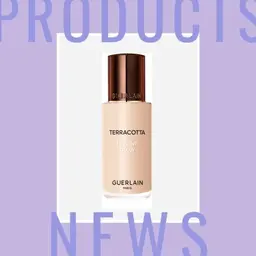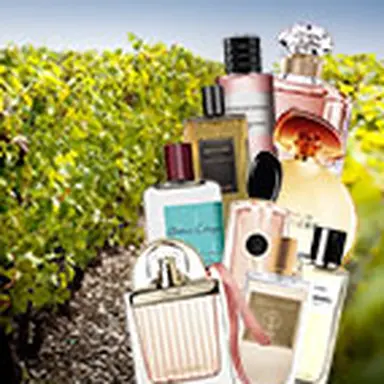
Only the most precious nectars used to conceal both natural and rare raw materials (Rose de Mai, jasmine from Grasse, Tunisian orange blossom, Laotian Oud…), but things are changing now. More affordable editions also highlight rural regions this spring.
It does not matter how much we are told an uninformed nose cannot make a difference between synthetic ingredients and natural raw materials, we can feel that a perfume which contains more natural ingredients has this ‘extra touch of soul,’ this little something that guarantees quality and aura. Similarly to grands crus , natural raw materials separate ‘pleasant’ fragrances from the perfumes we dream of adopting. They make the perfume change on the skin like no other. In short, they are ‘alive’. And even if their subtleties cannot be perceived by the common herd, the general impression is that of undeniable authenticity. Let alone their evocative power.
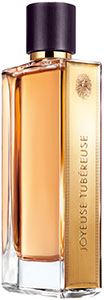 And yet, we did know that the most beautiful raw materials were dedicated to exceptional collections, like aptly-named L’Art et La Matière by Guerlain, whose latest version stages a tuberose from Central America with fresh, botanical inflexions (Joyeuse Tubéreuse, Eau de Parfum, 75ml, €205).
And yet, we did know that the most beautiful raw materials were dedicated to exceptional collections, like aptly-named L’Art et La Matière by Guerlain, whose latest version stages a tuberose from Central America with fresh, botanical inflexions (Joyeuse Tubéreuse, Eau de Parfum, 75ml, €205).
We also knew that the oh-so-precious harvests of Rose de Mai or jasmine in Grasse, southern France, were reserved for Chanel or Dior extracts (the purest, most accomplished expression of a perfume). However, this spring, perfume creators have more than ever transformed into explorers, and natural raw materials are no longer restricted to luxury editions. From now on, they will be found in perfume waters almost everyone can afford.
Lavender in the spotlight
Until recently, we could mainly find lavender in men’s fragrances (remember the famous fern note?). As a matter of fact, it has become the majesty of two great spring feminine perfumes.
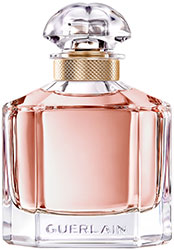 Thierry Wasser, a Guerlain perfumer-creator, has actually got fascinated by an exceptional species of lavender, the very French Carla lavender. He has combined it with New Guinea vanilla and Australian sandalwood in his new feminine creation, very simply named Mon Guerlain (Eau de Parfum, 30ml: €62.50, 50ml: €89, 100ml: €126, 1l: €3,200). These natural raw materials are even highlighted in ad campaigns, with an icon that is no other but… Angelina Jolie, a generous muse that creates meaning (all her fees go to non-profit organizations). Carla lavender (organic lavender derived from the part of the Drôme region located in Provence) refreshes the powerful, sensual fragrances of
Tahitensis
vanilla (Guerlain’s favourite raw material, an essential component of the Guerlinade perfume base). If he intensely worships beautiful raw materials, Thierry Wasser likes playing with them, gently driving them into a corner to obtain even more unique emotions. He is fond of contrasts,
‘otherwise perfumes are boring!’
This rare lavender, a ‘population’ lavender (non-cloned), obviously had everything to please him! Almost cold-distilled on the production site, the essence is captured with all its fragrance, nothing but its fragrance. Its olfactory properties are most special.
Thierry Wasser, a Guerlain perfumer-creator, has actually got fascinated by an exceptional species of lavender, the very French Carla lavender. He has combined it with New Guinea vanilla and Australian sandalwood in his new feminine creation, very simply named Mon Guerlain (Eau de Parfum, 30ml: €62.50, 50ml: €89, 100ml: €126, 1l: €3,200). These natural raw materials are even highlighted in ad campaigns, with an icon that is no other but… Angelina Jolie, a generous muse that creates meaning (all her fees go to non-profit organizations). Carla lavender (organic lavender derived from the part of the Drôme region located in Provence) refreshes the powerful, sensual fragrances of
Tahitensis
vanilla (Guerlain’s favourite raw material, an essential component of the Guerlinade perfume base). If he intensely worships beautiful raw materials, Thierry Wasser likes playing with them, gently driving them into a corner to obtain even more unique emotions. He is fond of contrasts,
‘otherwise perfumes are boring!’
This rare lavender, a ‘population’ lavender (non-cloned), obviously had everything to please him! Almost cold-distilled on the production site, the essence is captured with all its fragrance, nothing but its fragrance. Its olfactory properties are most special.
 Until now, in-store, it could only be found in the latest versions of Chanel’s Exclusifs: Boy, as well as Jersey (Eau de Parfum, 75ml, €175, or 200ml, €320). Harvested by Baume des Anges, this fresh, slightly fruity, soft and refined lavender loses its boyish air and reveals floral and feminine,
‘almost as if it had put on stiletto heels and lipstick,’
Thierry Wasser explains. Its flowers develop subtle fragrances endowed with rare elegance.
‘This new type of note helps get rid of that division, the man-woman ambiguity, because it plays with gender reconciliation, and that is what provides Mon Guerlain with its power and modernity,’
explains Delphine Jelk, who co-created the fragrance.
‘Carla lavender shakes up vanilla in its wrapping, almost motherly, feminine composition, by giving it boldness, freshness, clarity, and simplicity. It is neither about opposition, nor compromise, but rather about the richness produced by difference.’
Until now, in-store, it could only be found in the latest versions of Chanel’s Exclusifs: Boy, as well as Jersey (Eau de Parfum, 75ml, €175, or 200ml, €320). Harvested by Baume des Anges, this fresh, slightly fruity, soft and refined lavender loses its boyish air and reveals floral and feminine,
‘almost as if it had put on stiletto heels and lipstick,’
Thierry Wasser explains. Its flowers develop subtle fragrances endowed with rare elegance.
‘This new type of note helps get rid of that division, the man-woman ambiguity, because it plays with gender reconciliation, and that is what provides Mon Guerlain with its power and modernity,’
explains Delphine Jelk, who co-created the fragrance.
‘Carla lavender shakes up vanilla in its wrapping, almost motherly, feminine composition, by giving it boldness, freshness, clarity, and simplicity. It is neither about opposition, nor compromise, but rather about the richness produced by difference.’
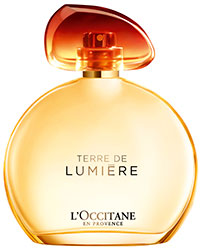 There is the same ‘harmonious duality’ between real Provençale lavender and a rare, honeyed, slightly leathered and wild absolute of Laotian beeswax in the new L’Occitane en Provence Eau de Parfum: Terre de Lumière (90ml, €89, as from April 19). The brand’s first multi-faceted, sweet fragrance (for their previous creations, they had chosen to emphasize mono-ingredients) is a
‘perfume that conveys a tension between aromatic freshness and feminine softness.’
There is the same ‘harmonious duality’ between real Provençale lavender and a rare, honeyed, slightly leathered and wild absolute of Laotian beeswax in the new L’Occitane en Provence Eau de Parfum: Terre de Lumière (90ml, €89, as from April 19). The brand’s first multi-faceted, sweet fragrance (for their previous creations, they had chosen to emphasize mono-ingredients) is a
‘perfume that conveys a tension between aromatic freshness and feminine softness.’
Two very different orange blossom species…
The spotlight is put on orange blossom, a most popular ingredient these days. The truth is, it is an eternal theme in perfumery.
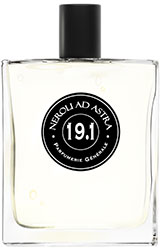 The best example of the difference offered by materials sourced from rural regions can be seen with Pierre Guillaume, who has composed two very different fragrances with neroli (orange blossom essence) in his Collection Parfumerie Générale. Created in 2008, the first is one of its bestsellers: Louanges Profanes (Eau de Toilette, 30ml, €68) stages a Tunisian neroli that is
‘green and lemon-flavoured, with powdered and spicy facets and, most of all, great freshness.’
The second will be launched in April: Neroli Ad Astra (Eau de Parfum, 30ml: €68, 50ml: €98, 100ml: €146) majestically plays with a Moroccan neroli boasting a much stronger floral predominance,
‘the exact opposite of the Cologne note in which it is too often incorporated. It is also muskier, with a honeyed, beeswax note.’
This real ‘olfactory tattoo’ adjusts on the skin throughout the day.
The best example of the difference offered by materials sourced from rural regions can be seen with Pierre Guillaume, who has composed two very different fragrances with neroli (orange blossom essence) in his Collection Parfumerie Générale. Created in 2008, the first is one of its bestsellers: Louanges Profanes (Eau de Toilette, 30ml, €68) stages a Tunisian neroli that is
‘green and lemon-flavoured, with powdered and spicy facets and, most of all, great freshness.’
The second will be launched in April: Neroli Ad Astra (Eau de Parfum, 30ml: €68, 50ml: €98, 100ml: €146) majestically plays with a Moroccan neroli boasting a much stronger floral predominance,
‘the exact opposite of the Cologne note in which it is too often incorporated. It is also muskier, with a honeyed, beeswax note.’
This real ‘olfactory tattoo’ adjusts on the skin throughout the day.
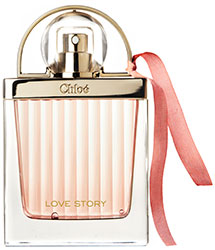 There is also some Tunisian orange blossom in the latest Chloé fragrance: Love Story sensual water (Eau de Parfum, 30ml: €60, 50ml: €87, 75ml, €103). Combined with the solar, almost vanilla-scented notes of heliotrope, it reveals sweeter and more carnal than ever.
There is also some Tunisian orange blossom in the latest Chloé fragrance: Love Story sensual water (Eau de Parfum, 30ml: €60, 50ml: €87, 75ml, €103). Combined with the solar, almost vanilla-scented notes of heliotrope, it reveals sweeter and more carnal than ever.
All roads always lead to Provence and the Grasse region…
 As for Dior, he has used a very rare essence of ‘Neroli Pays’ from the Vallauris rural area to provide the J’Adore Eau de Toilette with a new bright smile (50ml, €75.50 or 100ml, €105.50). This tiny-scaled production was restored by François Demachy, a Dior Perfumer-Creator, for whom
‘Neroli Pays has unique facets with unequalled power. It is sparkling and resonates in the back of our minds thanks to its zesty florality.’
As for Dior, he has used a very rare essence of ‘Neroli Pays’ from the Vallauris rural area to provide the J’Adore Eau de Toilette with a new bright smile (50ml, €75.50 or 100ml, €105.50). This tiny-scaled production was restored by François Demachy, a Dior Perfumer-Creator, for whom
‘Neroli Pays has unique facets with unequalled power. It is sparkling and resonates in the back of our minds thanks to its zesty florality.’
Rose de Mai (or Rose Centifolia, Rose de Grasse) is another Provence beauty found in most of the latest creations by the Maison de Couture based near the Champs-Élysées. Dior planted a thousand Centifolia roses at the Château de la Colle Noire (the property used to belong to Mister Christian Dior, it was restored in 2016 by LVMH). This rose has a character and
‘evokes the raw, solar beauty of the region’,
according to François Demachy.
 It was incorporated in the heart of the latest version of Christian Dior’s La Collection Privée, La Colle Noire (125ml, €227), where it is set with spices, wood, and amber. Of course, it is also found in the extracts (Miss Dior, J’Adore…). Ultimately, it was used in Miss Dior Absolutely Blooming (Eau de Parfum, 30ml: €64, 50ml, €88, 100ml: €126), or Poison Girl (Eau de Toilette, 100ml, €112.50).
It was incorporated in the heart of the latest version of Christian Dior’s La Collection Privée, La Colle Noire (125ml, €227), where it is set with spices, wood, and amber. Of course, it is also found in the extracts (Miss Dior, J’Adore…). Ultimately, it was used in Miss Dior Absolutely Blooming (Eau de Parfum, 30ml: €64, 50ml, €88, 100ml: €126), or Poison Girl (Eau de Toilette, 100ml, €112.50).
The queen of Grasse flowers also diffuses its peppery, woody fragrances in Si Rose Signature by Giorgio Armani (Eau de Parfum, 100ml: €120.50 or 50ml: €84.50). Combined with Rose Damascena, it creates a generous, sensual trail.
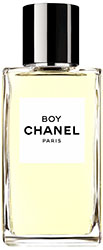 Lastly, Chanel will make you rediscover the rose geranium typical of Grasse in Boy, composed by Olivier Polge, Perfumer in the Maison. It has nothing to do with the variety often hackneyed by the monotony of flowery balconies! This androgynous flower endowed with mint and rose facets only proves its splendour if it is perfectly cultivated, an expertise the brand has perpetuated since 1987, with its exclusive partnership with the Mul family based in Pégomas (near the city of Nice). On top of that, this alliance helps secure both the olfactory quality and the quantity of flowers required for Chanel perfumes.
Lastly, Chanel will make you rediscover the rose geranium typical of Grasse in Boy, composed by Olivier Polge, Perfumer in the Maison. It has nothing to do with the variety often hackneyed by the monotony of flowery balconies! This androgynous flower endowed with mint and rose facets only proves its splendour if it is perfectly cultivated, an expertise the brand has perpetuated since 1987, with its exclusive partnership with the Mul family based in Pégomas (near the city of Nice). On top of that, this alliance helps secure both the olfactory quality and the quantity of flowers required for Chanel perfumes.
Radiant citrus fruit
We all know citrus fruit signs the top notes in most compositions. But if there is a brand that venerates it, it is Atelier Cologne, and for good reason: it is an essential component of Cologne! If the home of citrus fruit is Italy (Calabria ahead), the L’Oréal-purchased brand explores the
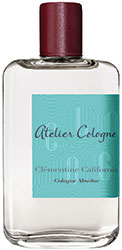 staggering freshness of Californian clementine, combined with Italian tangerine and juniper berries of Macedonia, in Clémentine California (Cologne Absolue, 15% concentration, 100ml: €100 or 30ml: €60, Collection Originale). Nothing acid or squeaky here though: the fragrance gradually changes to reveal aromatic Chinese spices (star anise and Sichuan pepper) and green notes (Egyptian basil), with a woody base (vetiver root of Haiti, sandalwood of New Caledonia, French cypress). Fruity, green, and sweet, the perfume is ‘lovable’ and delightfully solar, with a real trail.
staggering freshness of Californian clementine, combined with Italian tangerine and juniper berries of Macedonia, in Clémentine California (Cologne Absolue, 15% concentration, 100ml: €100 or 30ml: €60, Collection Originale). Nothing acid or squeaky here though: the fragrance gradually changes to reveal aromatic Chinese spices (star anise and Sichuan pepper) and green notes (Egyptian basil), with a woody base (vetiver root of Haiti, sandalwood of New Caledonia, French cypress). Fruity, green, and sweet, the perfume is ‘lovable’ and delightfully solar, with a real trail.
Wild or woody Oud
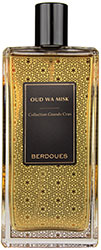 Today, it is a key exercise in perfumery: this dark, very odorous resin grows in a tree (Aquilaria). When it is infected by fungus, it develops a bewitching, complex smell that has no equivalent in the natural environment. Resinous and smoky with its woody, wild, and spicy notes, its richness is a pure Oriental concentrate! Again, there are differences depending on its origin. Laotian Oud is wild and intimate, while Thai Oud is woodier.
Today, it is a key exercise in perfumery: this dark, very odorous resin grows in a tree (Aquilaria). When it is infected by fungus, it develops a bewitching, complex smell that has no equivalent in the natural environment. Resinous and smoky with its woody, wild, and spicy notes, its richness is a pure Oriental concentrate! Again, there are differences depending on its origin. Laotian Oud is wild and intimate, while Thai Oud is woodier.
This phenomenally powerful, rare ingredient is used in whole collections by Berdoues and Mizensir, the brand created by great perfumer Alberto Morillas.
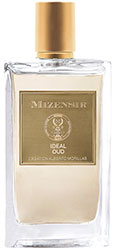 Berdoues has made rural regions the keystone of their Grands Crus Collection ‘Millésime’. In addition, the brand explains their
‘Millésimes are developed with the same particular care taken for the greatest wines,’
and recommends,
‘in order to preserve all the qualities of the fragrance, keeping it in a fresh place, away from the light and heat, and avoiding too frequent contacts with the ambient air.’
Exactly the same as for a Grand Cru! Laotian Oud is the showpiece in Oud Wa Misk (Eau de Parfum, 100ml, €125). Its exceptional generosity is tempered by the sweetness of musk. As regards Thai Oud, it can be combined with Turkish Rose (or Bulgarian Rose, or Rose Damascena) in Oud Wa Ward, or with Madagascar vanilla and Egyptian jasmine in Oud Wa Vanilla (100ml, €125 each). Here, it has a much stronger amber character.
Berdoues has made rural regions the keystone of their Grands Crus Collection ‘Millésime’. In addition, the brand explains their
‘Millésimes are developed with the same particular care taken for the greatest wines,’
and recommends,
‘in order to preserve all the qualities of the fragrance, keeping it in a fresh place, away from the light and heat, and avoiding too frequent contacts with the ambient air.’
Exactly the same as for a Grand Cru! Laotian Oud is the showpiece in Oud Wa Misk (Eau de Parfum, 100ml, €125). Its exceptional generosity is tempered by the sweetness of musk. As regards Thai Oud, it can be combined with Turkish Rose (or Bulgarian Rose, or Rose Damascena) in Oud Wa Ward, or with Madagascar vanilla and Egyptian jasmine in Oud Wa Vanilla (100ml, €125 each). Here, it has a much stronger amber character.
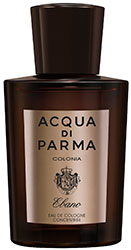 Oud Collection by Mizensir also highlights a Laotian Oud in Ideal Oud (100ml, €190, at Colette’s in Paris), a dialogue between Oud and the rose, two perfectly opposite raw materials, but which wonderfully match! Blended with a duo of roses, Bulgarian and Centifolia roses, pure Laotian Oud transforms into a dark, mysterious flower seasoned with a spicy hint of pink pepper and saffron.
Oud Collection by Mizensir also highlights a Laotian Oud in Ideal Oud (100ml, €190, at Colette’s in Paris), a dialogue between Oud and the rose, two perfectly opposite raw materials, but which wonderfully match! Blended with a duo of roses, Bulgarian and Centifolia roses, pure Laotian Oud transforms into a dark, mysterious flower seasoned with a spicy hint of pink pepper and saffron.
Here is a last minute example: in their ‘Ingredient Collection’ line, after the delicious Colonia Oud composed of agar wood oil and citrus fruit, Acqua di Parma has created two new ‘Colonia’: Colonia Ebano and Colonia Mirra (100ml, €177 or 180ml, €229). The former pays tribute to ebony and the wrapping scent of honey, the latter to the balsamic, amber-based notes of myrrh essence.
Ariane Le Febvre












